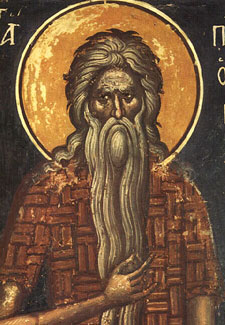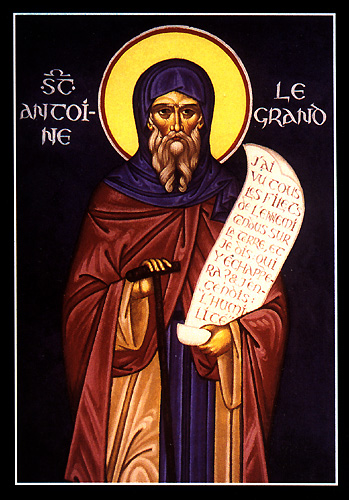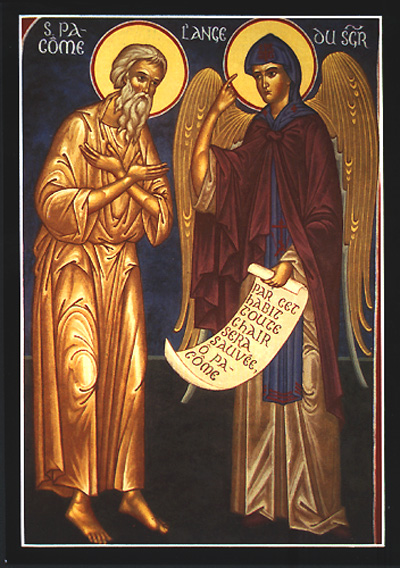Monasticism
With the end of the era of persecution and the rapid growth of Christianity in the cities, many Christians, both men and women, were drawn to wilderness areas to serve God alone, and to fight the devil. Some lived completely in isolation as hermits. Others lived near famous elders to be led by their spiritual guidance. And still others gathered together to live in communities—the first monasteries.

The ascetical life led by the monastics came to be seen as a white, bloodless martyrdom, marked by constant dying to one’s passions and desires. Not rejecting the world as something evil, the monastics served the world in the most effective way possible—by their constant prayer for the whole world, and by giving spiritual counsel to those who came to visit them.

Monasticism began in Egypt in the 3rd century. Saint Paul of Thebes (c. 230–340) was apparently the first hermit in the Egyptian desert. He was seen by Saint Anthony the Great (c. 250–356), the one traditionally considered to be the founder of monasticism, who lived in isolation for many years before allowing disciples to begin living around him. The very vivid and dramatic Life of Anthony, written by Saint Athanasius the Great, did much to popularize monasticism, especially in Western Europe. The 38 “sayings” of Anthony in The Sayings of the Desert Fathers remain to this day a superb teaching of the Christian spiritual life.

The Life of Saint Martin of Tours (d. 397), written by Sulpicius Severus, was intentionally modeled on the Life of Anthony. Saint Martin was a Roman soldier who became a Christian after beholding a vision of Christ in which the Lord commended him for giving half his cloak to a cold beggar. Together with Saint Hilary of Poitiers (c. 315–367), who is known as the “Saint Athanasius of the West” for his ardent defense of the Nicene Faith, Saint Martin established the first monastery in Gaul (modern-day France).

Communal, or cenobitic, monasticism was founded in Egypt by Saint Pachomius (c. 290–346). His monastic Rule greatly influenced Saint Basil the Great, as well as Saint John Cassian (c. 360–435), who founded two monasteries in southern Gaul with the ethos of Egyptian monasticism, as well as Saint Benedict of Nursia (c. 480–c. 550), whose Rule guided nearly all of Western monasticism for some 500 years.
One of the first monks to write about the spiritual and ascetical life was Saint Macarius the Great (c. 300–390) of Egypt. The Fifty Spiritual Homilies, traditionally ascribed to him or his disciples, are some of the most powerful spiritual treatises ever written. Evagrius of Ponticus (346–399), a disciple of Saint Macarius, also wrote important spiritual works, but some of his writing is considered to be tinged with Origenistic teachings.
